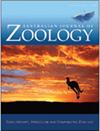Dispersion of long-nosed fur seals (Arctocephalus forsteri) determined by tagging
IF 1
4区 生物学
Q3 ZOOLOGY
引用次数: 1
Abstract
Abstract. Long-nosed fur seals (Arctocephalus forsteri) were tagged as pups in colonies on Kangaroo Island, South Australia in eight consecutive pupping seasons from 1988–89 to 1995–96. Thirty-nine tagged animals were sighted on the southern Australian coast, being 0.89% of those tagged. They were aged from 9 months to 14 years 6 months, with half in their second and third years. Most records (88%) were of animals that moved eastwards. The most distant records were from Sydney in the east (1700 km), south of Tasmania in the south (1240 km) and Head of Bight in the west (700 km). One animal was seen twice, both times on the north coast of Kangaroo Island, once underwater and two years later ashore. Satellite telemetry studies of juvenile A. forsteri from Kangaroo Island showed that they typically forage in pelagic waters ∼1000 km further south in association with the subtropical front. The study reported here shows that some animals tagged as pups disperse widely as juveniles around the southern Australian coast. The possibility of genetic interchange between breeding colonies is suggested by sightings of three tagged females aged 4 years and older at non-natal colonies.用标记法测定长鼻海豹的分布
摘要从1988-89年到1995-96年,在南澳大利亚袋鼠岛连续8个幼崽季节对长鼻海豹(Arctocephalus forsteri)进行幼崽标记。在南澳大利亚海岸发现了39只被标记的动物,占被标记动物的0.89%。他们的年龄从9个月到14岁6个月不等,其中一半是在第二年和第三年。大多数记录(88%)是关于向东移动的动物。最远的记录来自东部的悉尼(1700公里),南部的塔斯马尼亚南部(1240公里)和西部的白头(700公里)。其中一只被发现两次,两次都是在袋鼠岛的北海岸,一次是在水下,两年后是在岸上。对袋鼠岛幼年forsteri a.f orsteri的卫星遥测研究表明,它们通常在与亚热带锋相关的以南约1000公里的远洋水域觅食。这里报道的研究表明,一些被标记为幼崽的动物在幼年时就在澳大利亚南部海岸广泛分散。在非出生群体中观察到3只年龄在4岁及以上的被标记的雌性,表明繁殖群体之间可能存在遗传交换。
本文章由计算机程序翻译,如有差异,请以英文原文为准。
求助全文
约1分钟内获得全文
求助全文
来源期刊
CiteScore
2.40
自引率
0.00%
发文量
12
审稿时长
>12 weeks
期刊介绍:
Australian Journal of Zoology is an international journal publishing contributions on evolutionary, molecular and comparative zoology. The journal focuses on Australasian fauna but also includes high-quality research from any region that has broader practical or theoretical relevance or that demonstrates a conceptual advance to any aspect of zoology. Subject areas include, but are not limited to: anatomy, physiology, molecular biology, genetics, reproductive biology, developmental biology, parasitology, morphology, behaviour, ecology, zoogeography, systematics and evolution.
Australian Journal of Zoology is a valuable resource for professional zoologists, research scientists, resource managers, environmental consultants, students and amateurs interested in any aspect of the scientific study of animals.
Australian Journal of Zoology is published with the endorsement of the Commonwealth Scientific and Industrial Research Organisation (CSIRO) and the Australian Academy of Science.

 求助内容:
求助内容: 应助结果提醒方式:
应助结果提醒方式:


